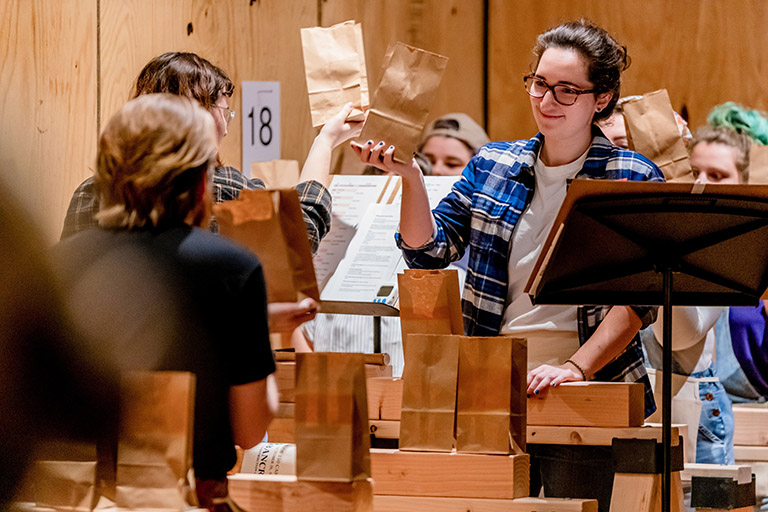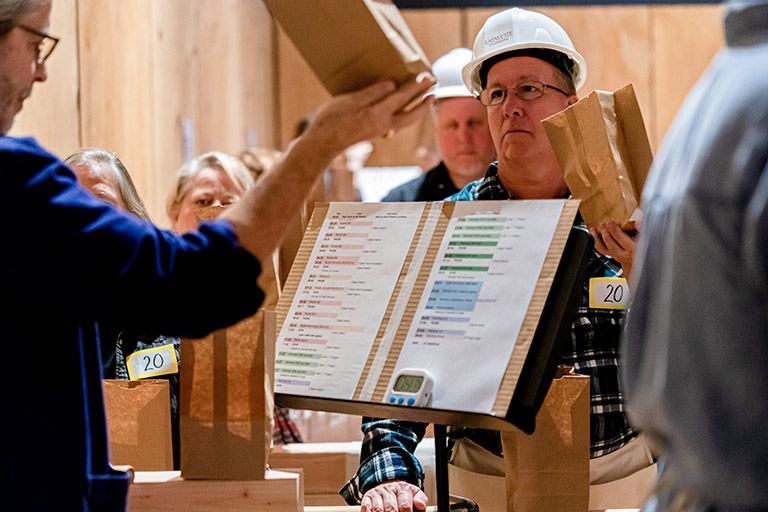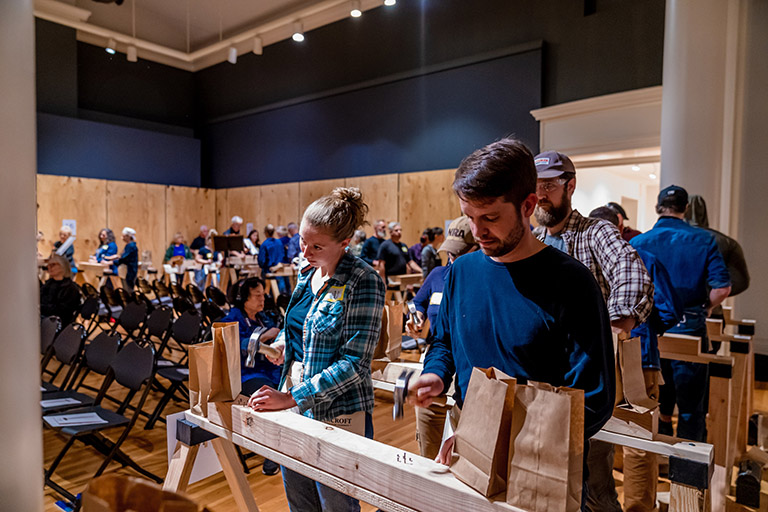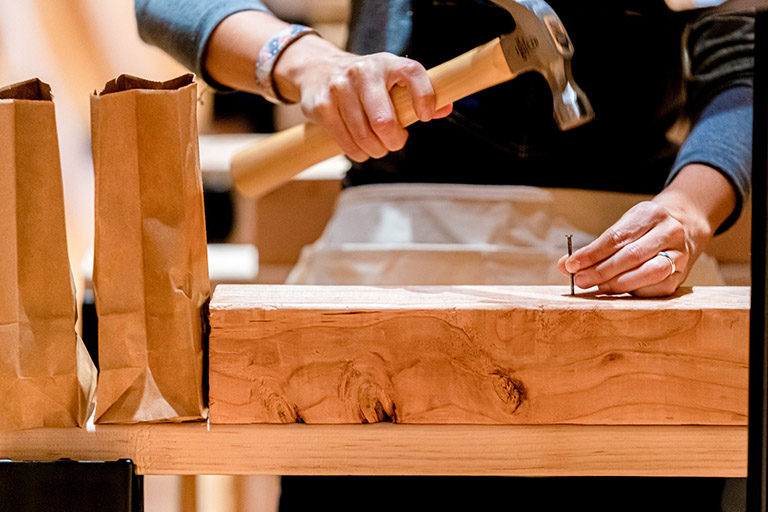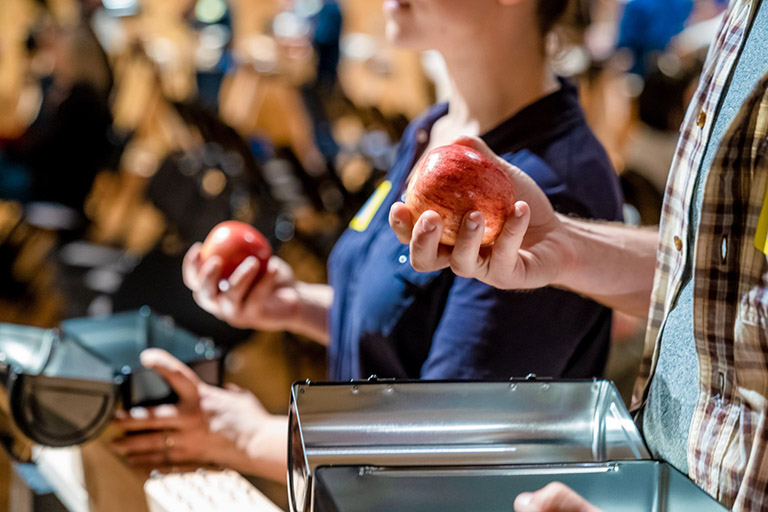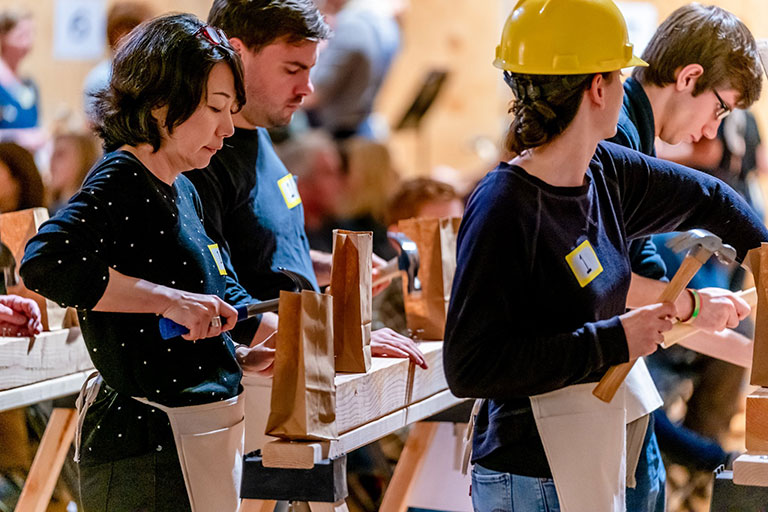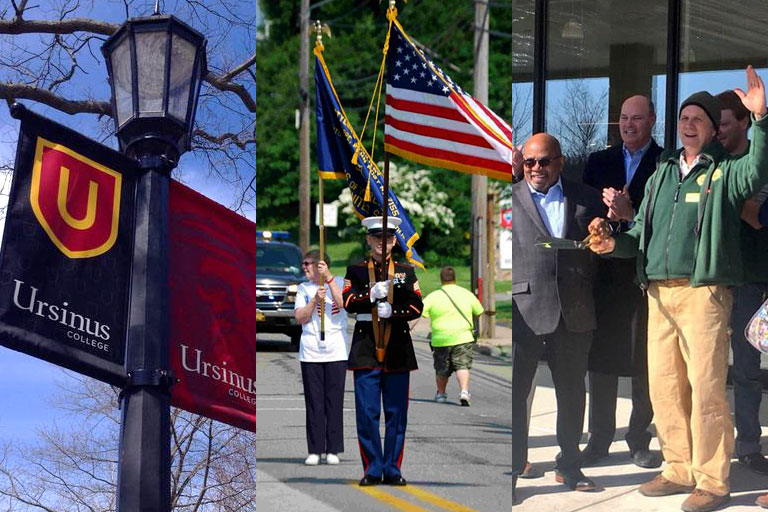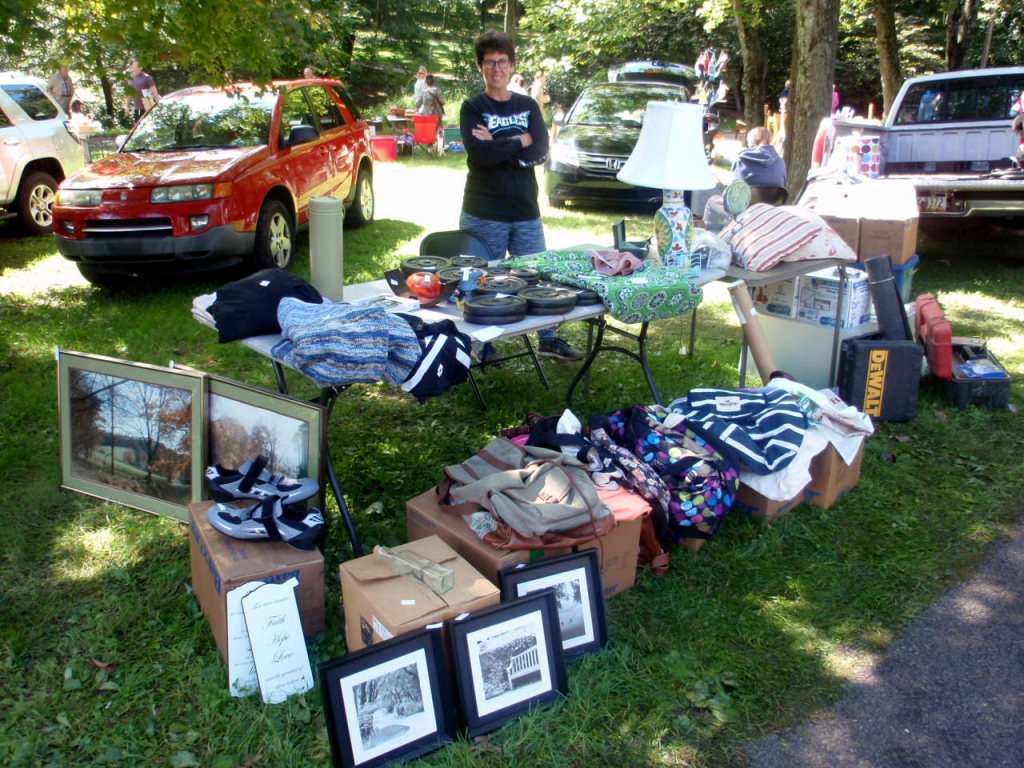
In celebration of Ursinus College’s 150th anniversary, the Berman Museum of Art’s 30th anniversary, and the many individuals who have collaborated in the building of these remarkable institutions, the museum presented artist Douglas Henderson’s performance piece Music for 150 Carpenters.
The performance—combining sawhorses, hammers and nails, lunchboxes and apples, in a symphony of sound—took place on Saturday, October 26, in front of 80 guests in the museum’s main gallery
About the Work
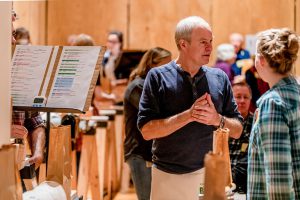
Henderson, a sound artist based in Berlin, Germany, and Brooklyn, New York, is the artist—or composer—behind the 30-minute interactive performance. Based on his Music for 100 Carpenters, first conducted in 2009 in Brooklyn, Henderson composed an immersive sound performance featuring 150 workers, 150 hammers, sawhorses and some 10,000 nails, working in unison to create a unique score.
The Performance and Exhibition
The performance carpenters consisted of not only professional, regional carpenters, but local artists, museum professionals, Ursinus faculty, staff and students. It also included supportive residents from throughout the Collegeville community. One participating resident described it as “… the most exciting town and gown event in recent memory”.
The performance will be replayed and projected in the Berman Museum’s main gallery beginning Nov. 7 through March 15, 2020.
“This immersive sound performance honors our history and our community, while encapsulating what it means to be part of an academic community,” said Berman Museum director Charles Stainback. “Henderson challenges viewers to not just view the work but to participate in its creation, much the same way we challenge students to engage with ideas at Ursinus.”
Architectural Drama
Henderson works with electroacoustic sound and sculptural installations, considering both the sensual aspect of what we hear and its role as a culturally charged material with social import. During the site-specific, multimedia piece, the audience sat in the center of the main gallery. Surrounding them along the perimeter were the 150 carpenters, and, under the guidance of “head carpenters,” the sounds of construction became waves of tonal murmur throughout the gallery.
“Confined to a limited sonic palate, I focus on architectural drama to move the music forward,” Henderson said. “As the piece progresses, a palpable sonic transcendence emerges: the physical actions of the performers cease to match the cloud of sound that they generate. The sensual reality of the piece finally evades the meanings and structures it invokes.”
Gallery
